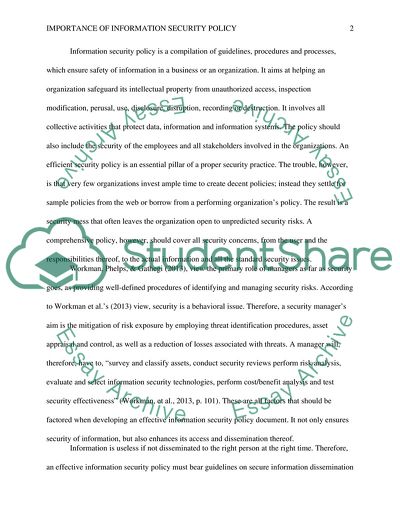Cite this document
(Importance of Information Security Policy Coursework Example | Topics and Well Written Essays - 2250 words, n.d.)
Importance of Information Security Policy Coursework Example | Topics and Well Written Essays - 2250 words. https://studentshare.org/information-technology/1807903-information-security-policy-research-paper
Importance of Information Security Policy Coursework Example | Topics and Well Written Essays - 2250 words. https://studentshare.org/information-technology/1807903-information-security-policy-research-paper
(Importance of Information Security Policy Coursework Example | Topics and Well Written Essays - 2250 Words)
Importance of Information Security Policy Coursework Example | Topics and Well Written Essays - 2250 Words. https://studentshare.org/information-technology/1807903-information-security-policy-research-paper.
Importance of Information Security Policy Coursework Example | Topics and Well Written Essays - 2250 Words. https://studentshare.org/information-technology/1807903-information-security-policy-research-paper.
“Importance of Information Security Policy Coursework Example | Topics and Well Written Essays - 2250 Words”. https://studentshare.org/information-technology/1807903-information-security-policy-research-paper.


